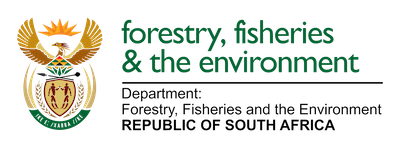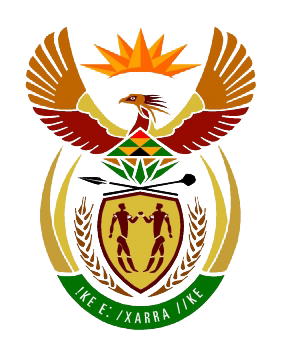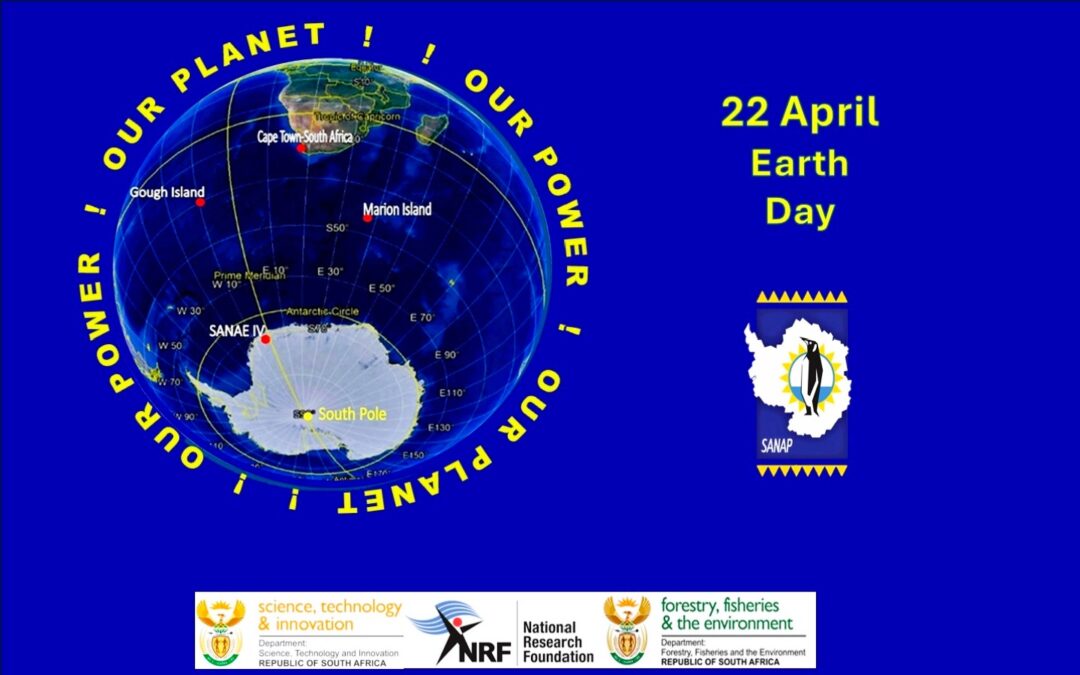
by Ria Olivier | Apr 22, 2025 | International Days, Research, SANAP, Science
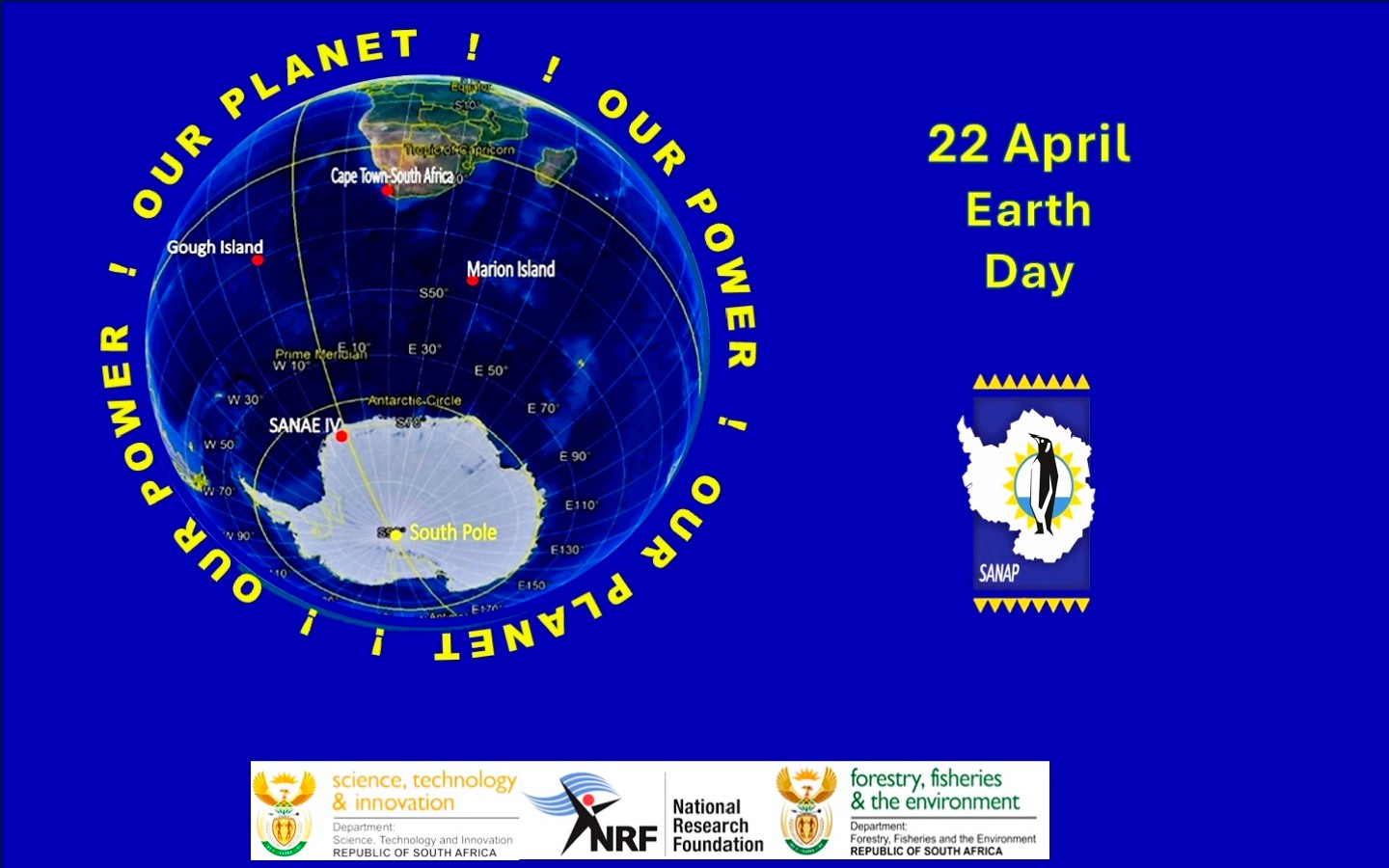 On Earth Day 2025, we recognize the vital role of science in securing the future of our planet. South Africa’s commitment to environmental stewardship is powerfully reflected in its research presence at Antarctica, Marion Island, and Gough Island, under the South African National Antarctic Programme (SANAP). These remote, pristine locations serve as natural laboratories for understanding global climate systems, ocean circulation, and the health of marine ecosystems. From monitoring atmospheric carbon levels in Antarctica to studying biodiversity on Marion Island, South African researchers are gathering critical data that informs climate models, shapes conservation strategies, and guides global efforts to mitigate climate change.
On Earth Day 2025, we recognize the vital role of science in securing the future of our planet. South Africa’s commitment to environmental stewardship is powerfully reflected in its research presence at Antarctica, Marion Island, and Gough Island, under the South African National Antarctic Programme (SANAP). These remote, pristine locations serve as natural laboratories for understanding global climate systems, ocean circulation, and the health of marine ecosystems. From monitoring atmospheric carbon levels in Antarctica to studying biodiversity on Marion Island, South African researchers are gathering critical data that informs climate models, shapes conservation strategies, and guides global efforts to mitigate climate change.
 The work conducted through SANAP not only enhances our understanding of Earth’s most vulnerable environments but also strengthens global collaboration on environmental sustainability. Long-term monitoring of weather patterns, sea temperatures, and wildlife populations across these islands contributes directly to international climate assessments and helps predict future planetary changes. As we mark Earth Day, let us celebrate the dedication of researchers who brave the extremes to ensure a liveable Earth for generations to come. Their efforts remind us that the answers to many of our environmental challenges lie in the farthest corners of our world—and that the time to act on them is now.
The work conducted through SANAP not only enhances our understanding of Earth’s most vulnerable environments but also strengthens global collaboration on environmental sustainability. Long-term monitoring of weather patterns, sea temperatures, and wildlife populations across these islands contributes directly to international climate assessments and helps predict future planetary changes. As we mark Earth Day, let us celebrate the dedication of researchers who brave the extremes to ensure a liveable Earth for generations to come. Their efforts remind us that the answers to many of our environmental challenges lie in the farthest corners of our world—and that the time to act on them is now.
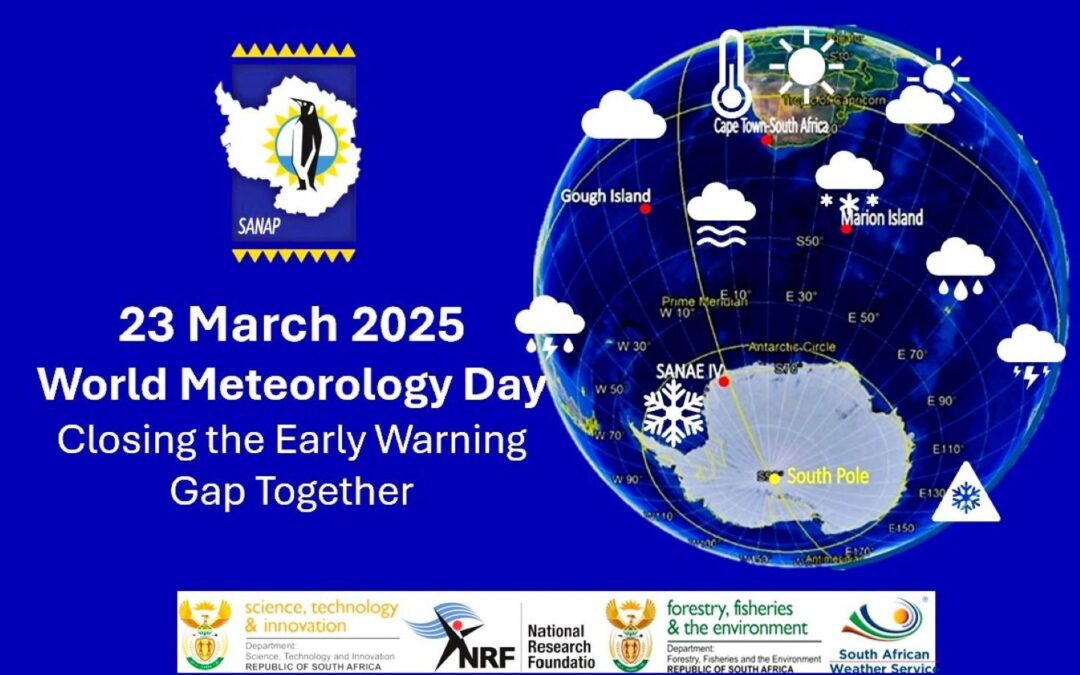
by Ria Olivier | Mar 23, 2025 | Antarctica, Gough Island, International Days, Marion Island, Meteorology, Overwintering Team, Research

 Each year, on March 23rd, the global community observes World Meteorological Day, commemorating the establishment of the World Meteorological Organization (WMO) in 1950. This day highlights the pivotal role meteorology plays in ensuring the safety and well-being of societies worldwide. In 2025, we focus on the indispensable contributions of meteorologists stationed at the South African National Antarctic Programme’s (SANAP) remote research stations: SANAE IV in Antarctica, Marion Island, and Gough Island.
Each year, on March 23rd, the global community observes World Meteorological Day, commemorating the establishment of the World Meteorological Organization (WMO) in 1950. This day highlights the pivotal role meteorology plays in ensuring the safety and well-being of societies worldwide. In 2025, we focus on the indispensable contributions of meteorologists stationed at the South African National Antarctic Programme’s (SANAP) remote research stations: SANAE IV in Antarctica, Marion Island, and Gough Island.
 On this World Meteorological Day, we extend our gratitude to the meteorologists of SANAP’s overwintering teams. Their unwavering commitment and resilience in some of the most challenging environments ensure that we continue to deepen our understanding of Earth’s atmospheric processes, ultimately contributing to the safety and well-being of societies worldwide.
On this World Meteorological Day, we extend our gratitude to the meteorologists of SANAP’s overwintering teams. Their unwavering commitment and resilience in some of the most challenging environments ensure that we continue to deepen our understanding of Earth’s atmospheric processes, ultimately contributing to the safety and well-being of societies worldwide.
 SANAE IV (South African National Antarctic Expedition IV): Located at 71°S, 2°W in Antarctica, SANAE IV. Meteorological observations are conducted year-round, providing critical data on atmospheric conditions in this remote region.
SANAE IV (South African National Antarctic Expedition IV): Located at 71°S, 2°W in Antarctica, SANAE IV. Meteorological observations are conducted year-round, providing critical data on atmospheric conditions in this remote region.
Marion Island: Situated at 46°S, 37°E in the Southern Indian Ocean. The island’s meteorological station collects essential weather data, contributing to climate studies and aiding in the understanding of global weather patterns.
Gough Island: Located at 40°S, 9°W in the South Atlantic Ocean, Gough Island has hosted a South African weather station since 1956. The station conducts hourly climate observations and upper-air ascents, playing a crucial role in monitoring weather systems that can impact South Africa.
Meteorologists assigned to these stations undertake year-long deployments, known as overwintering periods, during which they perform several critical functions:
Surface Observations: Conducting regular measurements of temperature, humidity, wind speed, and other atmospheric parameters to monitor and document local weather conditions.
Upper-Air Observations: Launching weather balloons equipped with instruments to collect data on atmospheric pressure, temperature, and humidity at various altitudes, which is vital for understanding weather patterns and forecasting.
Equipment Maintenance: Ensuring that all meteorological instruments and equipment are calibrated and functioning correctly to maintain the accuracy and reliability of collected data.
Data Management: Recording, analyzing, and transmitting collected meteorological data to the South African Weather Service (SAWS) and other relevant organizations for use in weather forecasting and climate research.
The data collected by SANAP’s overwintering meteorologists contribute significantly to:
Weather Forecasting: Providing accurate and timely data that enhance the precision of weather forecasts, benefiting maritime navigation, aviation, and local communities.
Climate Research: Offering valuable insights into climate variability and change, particularly in the understudied southern hemisphere regions.
Environmental Monitoring: Supporting studies on the interactions between the atmosphere and the unique ecosystems of Antarctica and the sub-Antarctic islands, aiding in the conservation of these fragile environments.
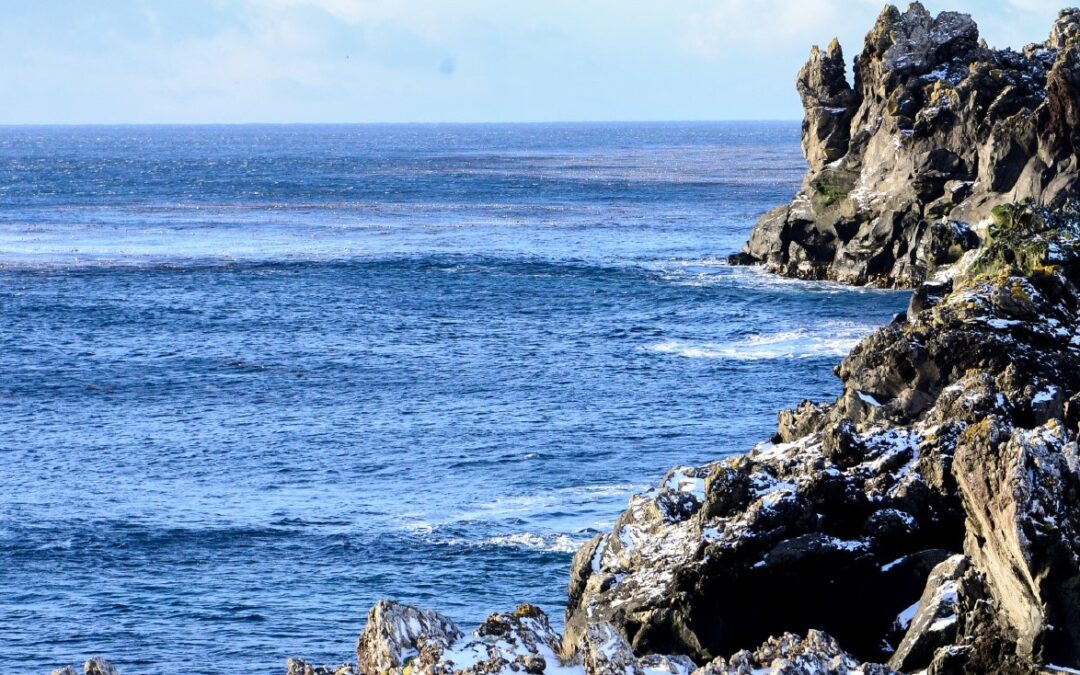
by Ria Olivier | Jul 31, 2024 | International Days, Marine Protected Area
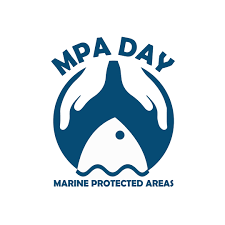
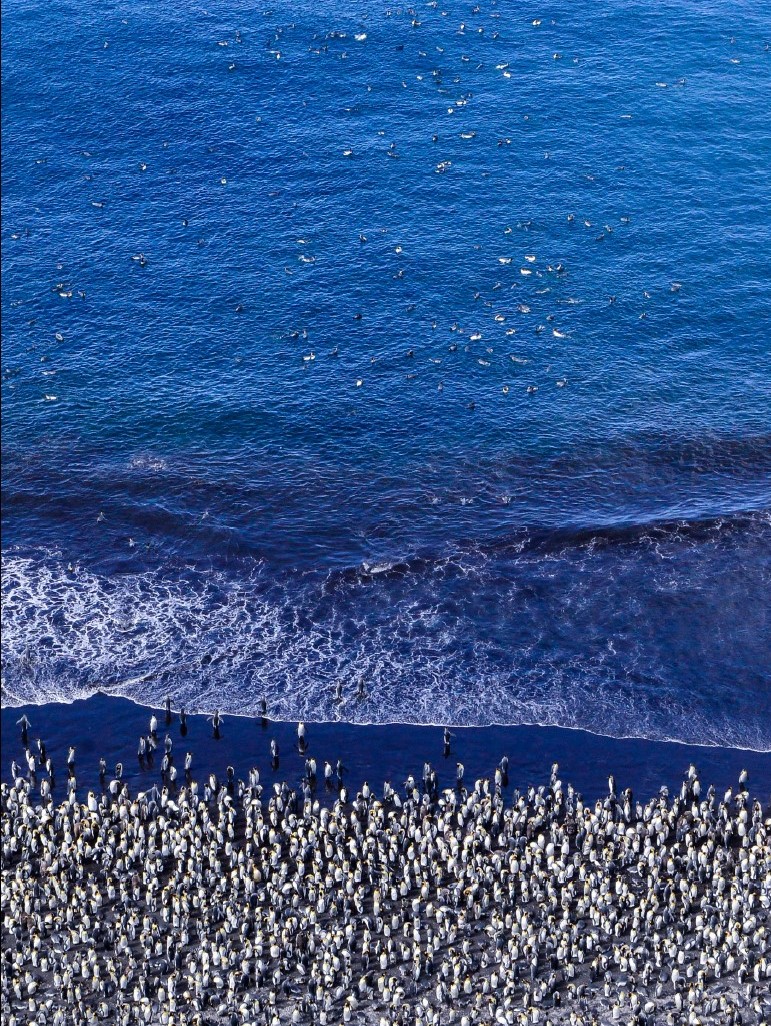 Each August 1st, we recognize the invaluable contribution of marine protected areas to ocean health and biodiversity. These underwater sanctuaries are vital for safeguarding our planet’s precious marine life and ecosystems. Here at the South African National Antarctic Programme (SANAP), we understand the critical role Marin Protected Areas (MPA) play in preserving the pristine waters of the Southern Ocean.
Each August 1st, we recognize the invaluable contribution of marine protected areas to ocean health and biodiversity. These underwater sanctuaries are vital for safeguarding our planet’s precious marine life and ecosystems. Here at the South African National Antarctic Programme (SANAP), we understand the critical role Marin Protected Areas (MPA) play in preserving the pristine waters of the Southern Ocean.
Everything you need to know about South African MPA’s
Why are MPAs Crucial for Antarctica?
The Southern Ocean is a global treasure trove of biodiversity. From majestic whales and playful penguins to countless microscopic organisms, this unique ecosystem is essential for the health of our planet. MPAs act as life-saving havens for marine life, allowing populations to recover and thrive. By shielding these delicate environments from human pressures like overfishing and pollution, we’re investing in the future of our oceans and the countless species that depend on them.
 SANAP’s Commitment to Conservation
SANAP’s Commitment to Conservation
As custodians of South Africa’s sub-Antarctic territory, SANAP is deeply committed to protecting the Southern Ocean. Our scientists diligently monitor these protected areas, gathering invaluable data to inform conservation strategies. The Prince Edward Islands Marine Protected Area, a cornerstone of our efforts, is a sub-Antarctic gem teeming with life. This MPA not only safeguards iconic species like penguins and albatrosses but also plays a crucial role in rebuilding depleted fish stocks.
 Your Role in Ocean Conservation
Your Role in Ocean Conservation
Everyone has a part to play in protecting our oceans. By reducing plastic consumption, supporting sustainable seafood choices, and spreading awareness about the importance of MPAs, you contribute to a healthier planet. Let’s work together to ensure that future generations can continue to marvel at the wonders of the marine world.
 Relevant Documents:
Relevant Documents:
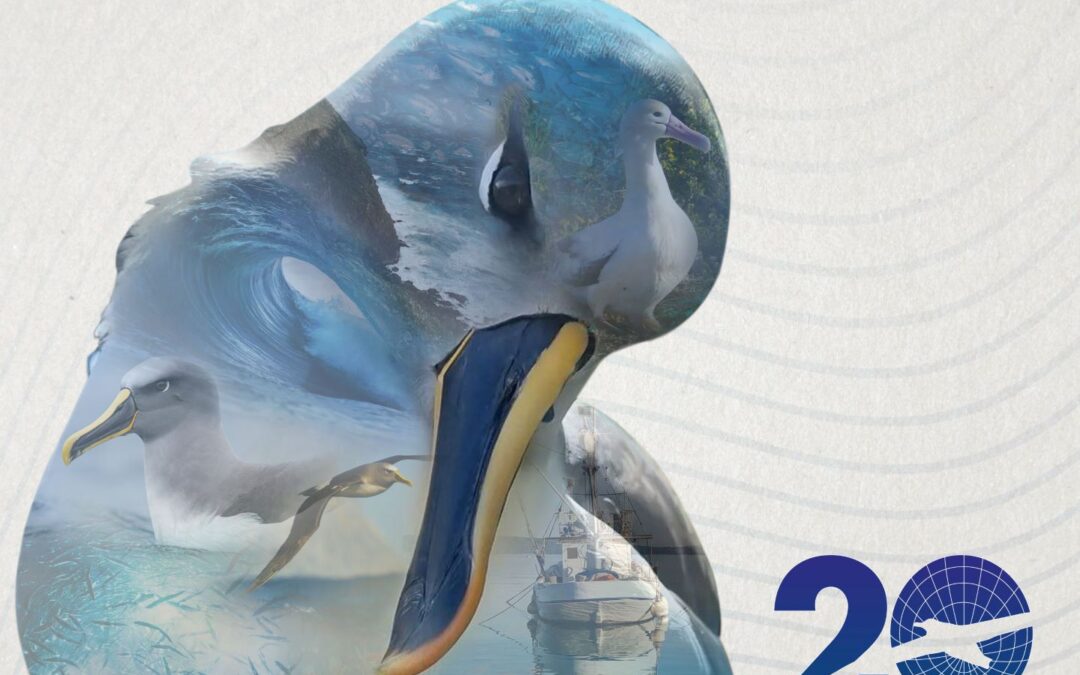
by Ria Olivier | Jun 19, 2024 | International Days, Invasion Biology, Marine Protected Area, Marion Island, Prince Edward Islands
Dance of the Albatross
The dance of the Albatross. Video made by Anche Louw on 16 April 2016 on Marion Island at Swartkops.
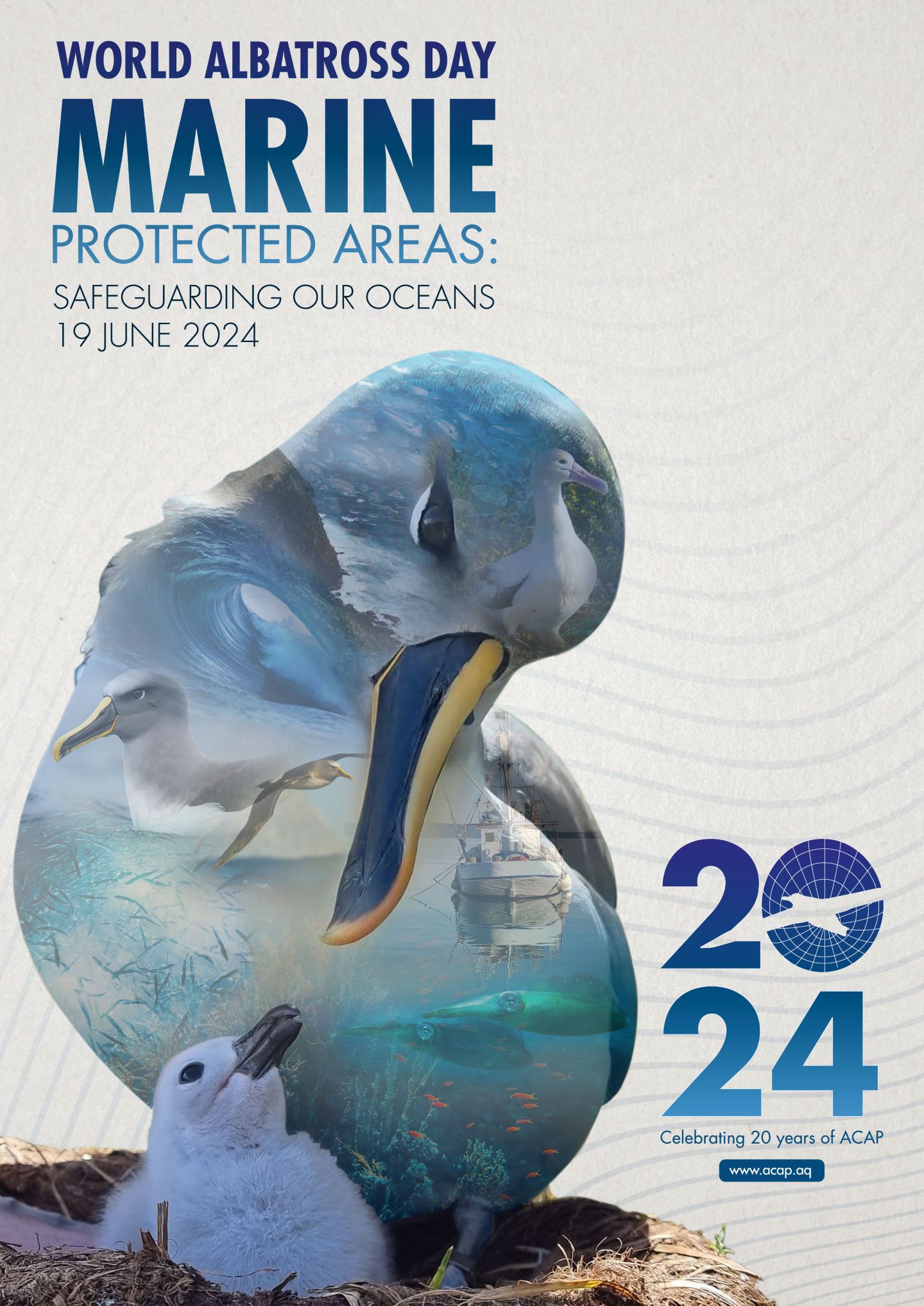 The Agreement on the Conservation of Albatrosses and Petrels (ACAP) has announced that “Marine Protected Areas – Safeguarding our Oceans” is to be its theme for this year’s World Albatross Day (WAD2024) on 19 June. “Albatrosses are the ultimate ocean wanderers, spending most of their lives at sea traversing vast distances across the globe in search of food such as fish, squid and krill. This year, World Albatross Day will focus on the connection between albatrosses and the ocean and highlight how MPAs can help improve the conservation status of these magnificent birds.” – ACAP
The Agreement on the Conservation of Albatrosses and Petrels (ACAP) has announced that “Marine Protected Areas – Safeguarding our Oceans” is to be its theme for this year’s World Albatross Day (WAD2024) on 19 June. “Albatrosses are the ultimate ocean wanderers, spending most of their lives at sea traversing vast distances across the globe in search of food such as fish, squid and krill. This year, World Albatross Day will focus on the connection between albatrosses and the ocean and highlight how MPAs can help improve the conservation status of these magnificent birds.” – ACAP
Help Saving Marion Island’s Seabirds. Donate now.
The WAD2024 poster was created by South African born Graphic Designer and long-time ACAP collaborator, Geoff Tyler, who also designed ACAP’s World Albatross Day logo, including this year’s commemorative logo marking the Agreement’s 20th year since coming into force.
Feature photo form video clip made by Anche Louw (22 April 2016)
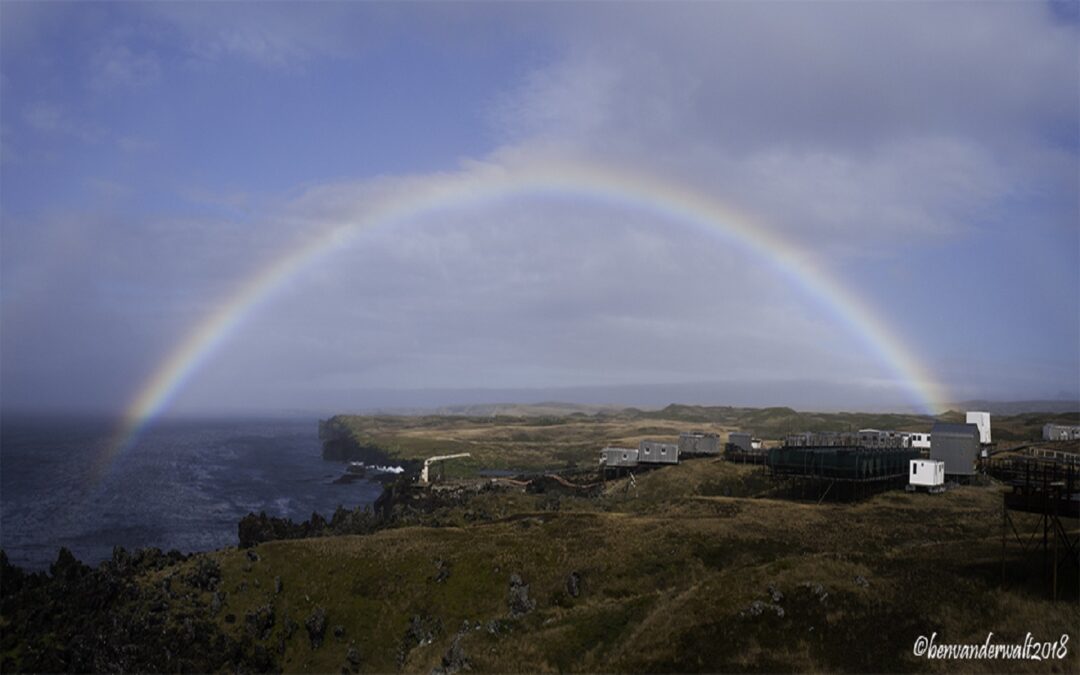
by Ria Olivier | Jun 5, 2024 | Announcement, Environment, International Days, Marion Island
On this World Environment Day we focus on Marion Island as the #generationrestoration highlights the importance of the Mouse-Free Marion Project
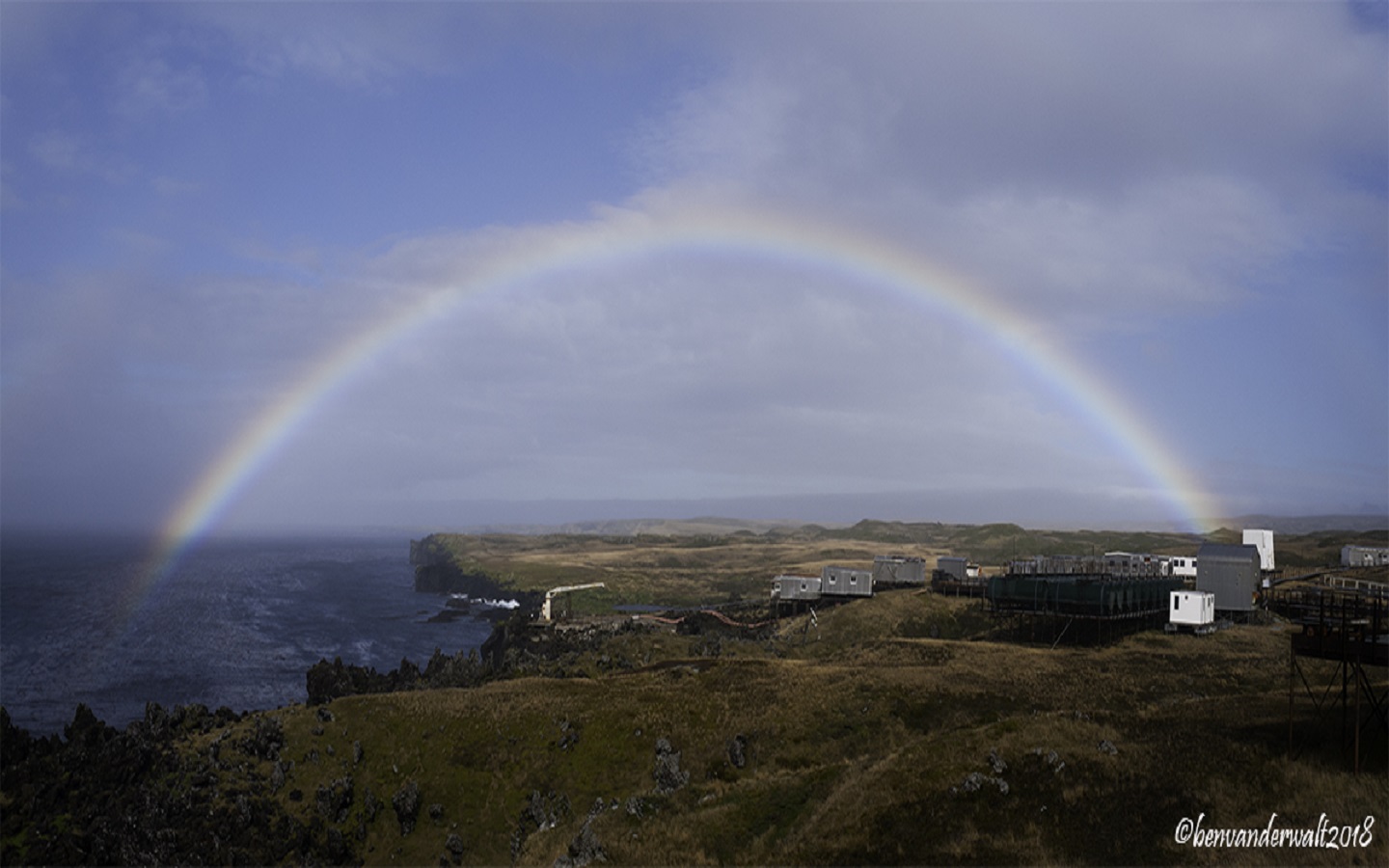 Marion Island and Prince Edward Island, collectively known as the Prince Edward Islands, are tiny specks of land in the Southern Ocean, the huge body of water that encircles the Antarctic Continent. Marion Island is the larger of the two islands, with an area of just under 300 square kilometres, whereas Prince Edward Island is considerably smaller – a mere 45 square kilometres. With a summit of 1 230 metres Marion Island is also much higher than the 672-metre high Prince Edward Island. The two islands are close neighbours, with only 19 kilometres of relatively shallow water separating them.
Marion Island and Prince Edward Island, collectively known as the Prince Edward Islands, are tiny specks of land in the Southern Ocean, the huge body of water that encircles the Antarctic Continent. Marion Island is the larger of the two islands, with an area of just under 300 square kilometres, whereas Prince Edward Island is considerably smaller – a mere 45 square kilometres. With a summit of 1 230 metres Marion Island is also much higher than the 672-metre high Prince Edward Island. The two islands are close neighbours, with only 19 kilometres of relatively shallow water separating them.
 The Prince Edward Islands, together with the other islands within the Southern Ocean, form part of a complex and productive ecosystem that has far-reaching influences. In turn the ocean dominates many aspects of the islands, from the way the vegetation grows to climate and geomorphology. The islands rose above the surface of the ocean after a prolonged period of underwater volcanic activity and the rocks and many of the landscapes reflect these tumultuous beginnings. From the jagged, almost surreal expanse of the black lava fields, to the many red scoria cones that dot the landscape, these volcanic origins are responsible for some of the most striking natural features of the islands. Despite the fact that today, researchers and managers visit them every year the islands still remain one of the wildest places on earth.
The Prince Edward Islands, together with the other islands within the Southern Ocean, form part of a complex and productive ecosystem that has far-reaching influences. In turn the ocean dominates many aspects of the islands, from the way the vegetation grows to climate and geomorphology. The islands rose above the surface of the ocean after a prolonged period of underwater volcanic activity and the rocks and many of the landscapes reflect these tumultuous beginnings. From the jagged, almost surreal expanse of the black lava fields, to the many red scoria cones that dot the landscape, these volcanic origins are responsible for some of the most striking natural features of the islands. Despite the fact that today, researchers and managers visit them every year the islands still remain one of the wildest places on earth.
 Text from: Publication Marion and the Prince Edward.
Text from: Publication Marion and the Prince Edward.
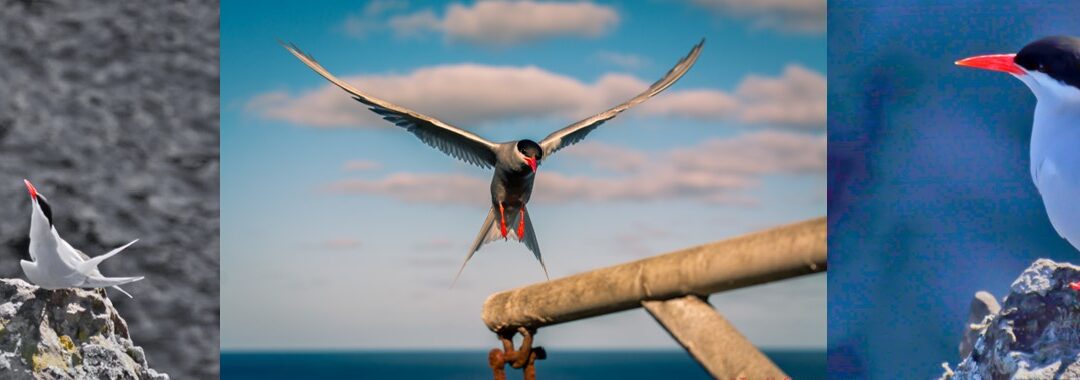
by Ria Olivier | May 11, 2024 | Ecology, International Days, Ornithology
 In 2024, World Migratory Bird Day will be celebrated on two days, 11 May and 12 October, aligning with the cyclic nature of
In 2024, World Migratory Bird Day will be celebrated on two days, 11 May and 12 October, aligning with the cyclic nature of  bird migration in different hemispheres. The World Migratory Bird Day campaign in 2024 will stress the need for proactive conservation measures. This includes reducing the use of pesticides and fertilisers, and where possible, switching to organic farming. Other measures include maintaining and connecting areas of natural vegetation which provide food and shelter for birds and other species, in agricultural landscapes.
bird migration in different hemispheres. The World Migratory Bird Day campaign in 2024 will stress the need for proactive conservation measures. This includes reducing the use of pesticides and fertilisers, and where possible, switching to organic farming. Other measures include maintaining and connecting areas of natural vegetation which provide food and shelter for birds and other species, in agricultural landscapes.

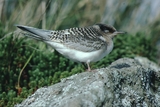 Pictures of Antarctic Tern taken by Johan Bothma,1968 (left) and John Cooper, 1984 (right
Pictures of Antarctic Tern taken by Johan Bothma,1968 (left) and John Cooper, 1984 (right
“Birds are the most mobile organisms on the planet. Their ability to fly vast distances enables them to exploit predictable, short-term peaks in food availability. Almost one fifth of all birds undertake regular movements, usually tied to seasonal cycles. However, such large-scale movements also incur risks from commuting across the landscape. The balance between these costs and benefits determines who stays and who migrates. Recent studies suggest that migration promotes speciation, principally through the formation of sedentary daughter species” – Peter Ryan & Michelle Vrettos
 The Antarctic Tern’s closest relative is the Arctic Tern and it is likely that they evolved from Arctic Terns that settled in the south. Among other seabirds, it is less clear in which direction the radiation occurred. Species such as gannets and fulmars are not trans-equatorial migrants and so it is more likely that a few stragglers that crossed the equator established new populations in the opposite hemisphere. (article: “Stay or go? – Migration as an evolutionary driver”) (Arctic Tern, most famous for its long-distance migrations. Flying annually between the northern and southern hemispheres)
The Antarctic Tern’s closest relative is the Arctic Tern and it is likely that they evolved from Arctic Terns that settled in the south. Among other seabirds, it is less clear in which direction the radiation occurred. Species such as gannets and fulmars are not trans-equatorial migrants and so it is more likely that a few stragglers that crossed the equator established new populations in the opposite hemisphere. (article: “Stay or go? – Migration as an evolutionary driver”) (Arctic Tern, most famous for its long-distance migrations. Flying annually between the northern and southern hemispheres)
Colour Images by Tom McSherry taken on Gough Island in 2017
All images available on Antarctic Legacy of South Africa archive, contributed by Johan Bothma, John Cooper, Tom McSherry

 On Earth Day 2025, we recognize the vital role of science in securing the future of our planet. South Africa’s commitment to environmental stewardship is powerfully reflected in its research presence at Antarctica, Marion Island, and Gough Island, under the South African National Antarctic Programme (SANAP). These remote, pristine locations serve as natural laboratories for understanding global climate systems, ocean circulation, and the health of marine ecosystems. From monitoring atmospheric carbon levels in Antarctica to studying biodiversity on Marion Island, South African researchers are gathering critical data that informs climate models, shapes conservation strategies, and guides global efforts to mitigate climate change.
On Earth Day 2025, we recognize the vital role of science in securing the future of our planet. South Africa’s commitment to environmental stewardship is powerfully reflected in its research presence at Antarctica, Marion Island, and Gough Island, under the South African National Antarctic Programme (SANAP). These remote, pristine locations serve as natural laboratories for understanding global climate systems, ocean circulation, and the health of marine ecosystems. From monitoring atmospheric carbon levels in Antarctica to studying biodiversity on Marion Island, South African researchers are gathering critical data that informs climate models, shapes conservation strategies, and guides global efforts to mitigate climate change. The work conducted through SANAP not only enhances our understanding of Earth’s most vulnerable environments but also strengthens global collaboration on environmental sustainability. Long-term monitoring of weather patterns, sea temperatures, and wildlife populations across these islands contributes directly to international climate assessments and helps predict future planetary changes. As we mark Earth Day, let us celebrate the dedication of researchers who brave the extremes to ensure a liveable Earth for generations to come. Their efforts remind us that the answers to many of our environmental challenges lie in the farthest corners of our world—and that the time to act on them is now.
The work conducted through SANAP not only enhances our understanding of Earth’s most vulnerable environments but also strengthens global collaboration on environmental sustainability. Long-term monitoring of weather patterns, sea temperatures, and wildlife populations across these islands contributes directly to international climate assessments and helps predict future planetary changes. As we mark Earth Day, let us celebrate the dedication of researchers who brave the extremes to ensure a liveable Earth for generations to come. Their efforts remind us that the answers to many of our environmental challenges lie in the farthest corners of our world—and that the time to act on them is now.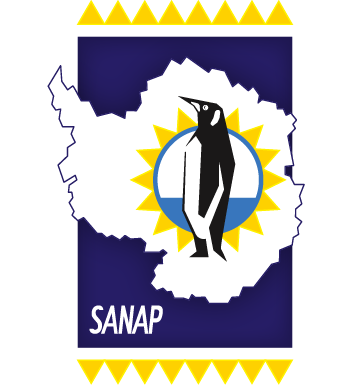


 Each year, on March 23rd, the global community observes World Meteorological Day, commemorating the establishment of the World Meteorological Organization (WMO) in 1950. This day highlights the pivotal role meteorology plays in ensuring the safety and well-being of societies worldwide. In 2025, we focus on the indispensable contributions of meteorologists stationed at the South African National Antarctic Programme’s (SANAP) remote research stations: SANAE IV in Antarctica, Marion Island, and Gough Island.
Each year, on March 23rd, the global community observes World Meteorological Day, commemorating the establishment of the World Meteorological Organization (WMO) in 1950. This day highlights the pivotal role meteorology plays in ensuring the safety and well-being of societies worldwide. In 2025, we focus on the indispensable contributions of meteorologists stationed at the South African National Antarctic Programme’s (SANAP) remote research stations: SANAE IV in Antarctica, Marion Island, and Gough Island. On this World Meteorological Day, we extend our gratitude to the meteorologists of SANAP’s overwintering teams. Their unwavering commitment and resilience in some of the most challenging environments ensure that we continue to deepen our understanding of Earth’s atmospheric processes, ultimately contributing to the safety and well-being of societies worldwide.
On this World Meteorological Day, we extend our gratitude to the meteorologists of SANAP’s overwintering teams. Their unwavering commitment and resilience in some of the most challenging environments ensure that we continue to deepen our understanding of Earth’s atmospheric processes, ultimately contributing to the safety and well-being of societies worldwide. SANAE IV (South African National Antarctic Expedition IV): Located at 71°S, 2°W in Antarctica, SANAE IV. Meteorological observations are conducted year-round, providing critical data on atmospheric conditions in this remote region.
SANAE IV (South African National Antarctic Expedition IV): Located at 71°S, 2°W in Antarctica, SANAE IV. Meteorological observations are conducted year-round, providing critical data on atmospheric conditions in this remote region.

 Each August 1st, we recognize the invaluable contribution of marine protected areas to ocean health and biodiversity. These underwater sanctuaries are vital for safeguarding our planet’s precious marine life and ecosystems. Here at the South African National Antarctic Programme (SANAP), we understand the critical role Marin Protected Areas (MPA) play in preserving the pristine waters of the Southern Ocean.
Each August 1st, we recognize the invaluable contribution of marine protected areas to ocean health and biodiversity. These underwater sanctuaries are vital for safeguarding our planet’s precious marine life and ecosystems. Here at the South African National Antarctic Programme (SANAP), we understand the critical role Marin Protected Areas (MPA) play in preserving the pristine waters of the Southern Ocean. SANAP’s Commitment to Conservation
SANAP’s Commitment to Conservation Your Role in Ocean Conservation
Your Role in Ocean Conservation Relevant Documents:
Relevant Documents:
 The Agreement on the Conservation of Albatrosses and Petrels (ACAP) has announced that “Marine Protected Areas – Safeguarding our Oceans” is to be its theme for this year’s
The Agreement on the Conservation of Albatrosses and Petrels (ACAP) has announced that “Marine Protected Areas – Safeguarding our Oceans” is to be its theme for this year’s 
 Marion Island and Prince Edward Island, collectively known as the Prince Edward Islands, are tiny specks of land in the Southern Ocean, the huge body of water that encircles the Antarctic Continent. Marion Island is the larger of the two islands, with an area of just under 300 square kilometres, whereas Prince Edward Island is considerably smaller – a mere 45 square kilometres. With a summit of 1 230 metres Marion Island is also much higher than the 672-metre high Prince Edward Island. The two islands are close neighbours, with only 19 kilometres of relatively shallow water separating them.
Marion Island and Prince Edward Island, collectively known as the Prince Edward Islands, are tiny specks of land in the Southern Ocean, the huge body of water that encircles the Antarctic Continent. Marion Island is the larger of the two islands, with an area of just under 300 square kilometres, whereas Prince Edward Island is considerably smaller – a mere 45 square kilometres. With a summit of 1 230 metres Marion Island is also much higher than the 672-metre high Prince Edward Island. The two islands are close neighbours, with only 19 kilometres of relatively shallow water separating them. The Prince Edward Islands, together with the other islands within the Southern Ocean, form part of a complex and productive ecosystem that has far-reaching influences. In turn the ocean dominates many aspects of the islands, from the way the vegetation grows to climate and geomorphology. The islands rose above the surface of the ocean after a prolonged period of underwater volcanic activity and the rocks and many of the landscapes reflect these tumultuous beginnings. From the jagged, almost surreal expanse of the black lava fields, to the many red scoria cones that dot the landscape, these volcanic origins are responsible for some of the most striking natural features of the islands. Despite the fact that today, researchers and managers visit them every year the islands still remain one of the wildest places on earth.
The Prince Edward Islands, together with the other islands within the Southern Ocean, form part of a complex and productive ecosystem that has far-reaching influences. In turn the ocean dominates many aspects of the islands, from the way the vegetation grows to climate and geomorphology. The islands rose above the surface of the ocean after a prolonged period of underwater volcanic activity and the rocks and many of the landscapes reflect these tumultuous beginnings. From the jagged, almost surreal expanse of the black lava fields, to the many red scoria cones that dot the landscape, these volcanic origins are responsible for some of the most striking natural features of the islands. Despite the fact that today, researchers and managers visit them every year the islands still remain one of the wildest places on earth. Text from: Publication Marion and the Prince Edward.
Text from: Publication Marion and the Prince Edward. 
 In 2024,
In 2024,  bird migration in different hemispheres. The World Migratory Bird Day campaign in 2024 will stress the need for proactive conservation measures. This includes reducing the use of pesticides and fertilisers, and where possible, switching to organic farming. Other measures include maintaining and connecting areas of natural vegetation which provide food and shelter for birds and other species, in agricultural landscapes.
bird migration in different hemispheres. The World Migratory Bird Day campaign in 2024 will stress the need for proactive conservation measures. This includes reducing the use of pesticides and fertilisers, and where possible, switching to organic farming. Other measures include maintaining and connecting areas of natural vegetation which provide food and shelter for birds and other species, in agricultural landscapes. 
 Pictures of Antarctic Tern taken by Johan Bothma,1968 (left) and John Cooper, 1984 (right
Pictures of Antarctic Tern taken by Johan Bothma,1968 (left) and John Cooper, 1984 (right The Antarctic Tern’s closest relative is the Arctic Tern and it is likely that they evolved from Arctic Terns that settled in the south. Among other seabirds, it is less clear in which direction the radiation occurred. Species such as gannets and fulmars are not trans-equatorial migrants and so it is more likely that a few stragglers that crossed the equator established new populations in the opposite hemisphere. (article: “
The Antarctic Tern’s closest relative is the Arctic Tern and it is likely that they evolved from Arctic Terns that settled in the south. Among other seabirds, it is less clear in which direction the radiation occurred. Species such as gannets and fulmars are not trans-equatorial migrants and so it is more likely that a few stragglers that crossed the equator established new populations in the opposite hemisphere. (article: “
